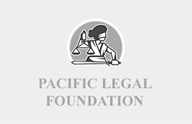Biden’s attack on charter schools is an attack on students and the Constitution

During his presidential campaign, Joe Biden revealed that he is “not a fan of charter schools,” a bad take that is now, most unfortunately, influencing education policy.
Earlier this year, Biden’s Department of Education (ED) proposed drastic policy changes that hinder the creation of new charter schools. These rules officially went into effect on August 5.
Over the past several years, charter school enrollment has been skyrocketing across the country, as families flee traditional public schools in droves.
Instead of recognizing this exodus for what it is—a reaction to the country’s decades-long failure to provide quality education to students—and using this as an impetus for change, the ED is using authority it doesn’t actually have to squash the competition.
In doing so, the agency is denying children a shot at a better education.
Pacific Legal Foundation is helping families fight back.
Charter schools to the rescue
Whether it’s the one-size-fits-all approach to curriculum, the disastrous handling of the pandemic, the elimination of merit-based programs that help bright students succeed, or the shocking number of high school graduates who can’t read, public schools across the country have proven themselves incapable of fulfilling their duty to adequately educate and prepare students for their futures.
School districts will blame these problems on a lack of funding. Yet, no matter how much funding has been given over the years, results never seem to improve.
While some families have opted out of this system, choosing instead to send their children to private schools or to homeschool, those options are not feasible for all. Thankfully, charter schools have provided parents and students with high-quality educational opportunities they otherwise would not have been able to access.
Since 1994, the federal Charter Schools Program has provided the funding necessary for creating and expanding access to charters.
Recognizing how impactful these institutions are for students, in 2015, Congress expanded the program to “increase the number of high-quality charter schools available to students across the United States,” a change that came with overwhelming bipartisan support. The program requires the Secretary of Education to distribute hundreds of millions of dollars in grants annually, which are given based on criteria set by Congress.
Congress allocated $440 million for the federal charter school program for 2023, but the ED has taken it upon itself to bypass Congress and set its own criteria that will make it much harder for schools to receive that money.
Taking a closer look at the new standards, it hard to imagine a scenario in which these rules are meant to do anything aside from shield public schools from the consequences of their own shortcomings while simultaneously punishing successful alternatives.
Squashing the competition
First, the ED’s criteria require a prospective charter school to be evaluated based on its “collaboration” with an existing public school. This requires an applicant school to set out a timeline of specific collaborations it has secured with the public school and provide evidence of the collaboration. If a local school refuses to cooperate, the charter school applicant is at a serious disadvantage, as are the students who will now have fewer choices available to them.
A major appeal of charter schools, and arguably one of the main reasons they are so successful, is their right to operate independently of public schools. With this freedom, they can set higher standards for their curriculum and avoid bureaucratic rules that prevent traditional schools from thriving.
The next rule, and perhaps the most ridiculous of the bunch, mandates that applicants prove they are fulfilling an unmet enrollment need in the community.
If the ED finds no evidence that a school district is suffering from overcrowding or long wait lists, it has given itself the power to claim that there is no legitimate “need” for a new charter school. Charter schools do not exist to be overflow alternatives to public schools—that was never their intended purpose. They exist because families are eager for alternative to the broken public school system.
This rule is no less ridiculous than forcing a restaurant to get permission from competing establishments before they can open…which unfortunately does happen, thanks to occupational licensing laws.
The ED is supposed to be serving students, not its own interests. If it was really concerned about charter schools proving their “need,” it might want to consider listening to the families who are begging for more choice in education.
Government attempts to racially engineer student bodies
As a part of the needs analysis requirement, an applicant also must provide an “analysis of the proposed charter school’s projected student demographics and a description of the demographics of students attending public schools in the local community.” The purpose is to show that the applicant school won’t “increase racial or socioeconomic segregation or isolation” in either the new charter or the existing school district.
But racial “isolation” includes serving predominantly students of one racial or socioeconomic group.
The ED now acknowledges that sometimes schools will simply reflect their communities, which are themselves racially or socioeconomically isolated. But it says that it won’t count that against a charter unless it “increases” isolation beyond community demographics.
But there doesn’t seem to be any real reason for them in the first place.
In 2020, the charter school enrollment in Michigan’s Genesee County was comprised of approximately 91% economically disadvantaged students, 80% black students, and 3% Hispanic or Latino students.
By contrast, in 2020, traditional public school enrollment in Genesee County was comprised of approximately 56% economically disadvantaged students, 19% black students, and 5% Hispanic or Latino students.
Charter schools in the county—which encompasses Flint, Michigan–are therefore much more “isolated” than the public schools.
Similarly, for the 2020-21 school year, Cincinnati Public Schools reported that approximately 62% of its students were black, 21% were white, and 9% were Hispanic or Latino.
Thomas B. Fordham Institute is a nonprofit charter school authorizer, and a client of PLF, that supervises 13 charter schools in Ohio. Fordham’s sponsored schools in Cincinnati serve larger numbers of black students than the school district at large.
In 2020-21, for example, of the students at Phoenix Community Learning Center in Cincinnati, 99% were black. Likewise, in 2020-21, 91% of students at Regeneration Schools in Cincinnati were black. Once again, we have a stark rise in “isolation” from the charter schools.
Many charter schools significantly increased “isolation” from the county demographics but do so by providing high-quality alternatives to many disadvantaged students.
The ED now thinks of this as a bad thing that will disadvantage an applicant school.
The reality is, when government tries to racially engineer a student body, it often hurts those it is supposed to benefit.
In Hartford, Connecticut, magnet schools mandated a quota of students admitted to a maximum of 75% black and Hispanic and a minimum of 25% white.
The school district may have thought that these quotas would help minority students, but the fact is they were denying qualified students entry based on their race. In Hartford, some schools didn’t have the number of white kids needed to fill the 25% quota. Because of this, black families missed out on opportunities when school districts’ attempts to racially engineer student bodies backfired.
Hartford student Jarod Thompson was denied entry to a magnet school three times, even though seats were left empty, because the school had already met its quota of black students. If admittance was based on other factors, like merit, instead of race, Jarod would have access to opportunities that would help him prepare for his future.
PLF represented several parents in a lawsuit against Hartford’s quota and won.
But wait, there’s more
Taking away a family’s right to choose the school that best suits their situation is bad enough on its own. But there is another major problem: The new rules are unconstitutional.
Congress set the criteria for the Charter Schools Program and made it clear that its goal was to increase access to charter schools. It never gave the ED the authority to add its own rules whenever it deems it necessary. And it certainly never gave the department the power to undermine the program entirely.
The constitutional guarantee of separation of powers prevents one branch of the government from usurping the responsibilities of another. If the ED wants additional criteria added to the Charter Schools Program, it should ask Congress to do so.
When agencies like the ED assume the role of the legislatures, it never ends in a benevolent application of power. On the contrary, when this type of regulatory overreach is allowed to go unchecked, it is only a matter of time before giving an inch to the bureaucrats becomes a mile.
Michigan’s Charter School Association and the Thomas B. Fordham Institute are not content to sit back while the children pay the price of the ED’s power grab.
PLF filed suit on behalf of these two organizations and is sending a message to the Biden administration that it cannot force students to attend failing schools by imposing unconstitutional rules.








